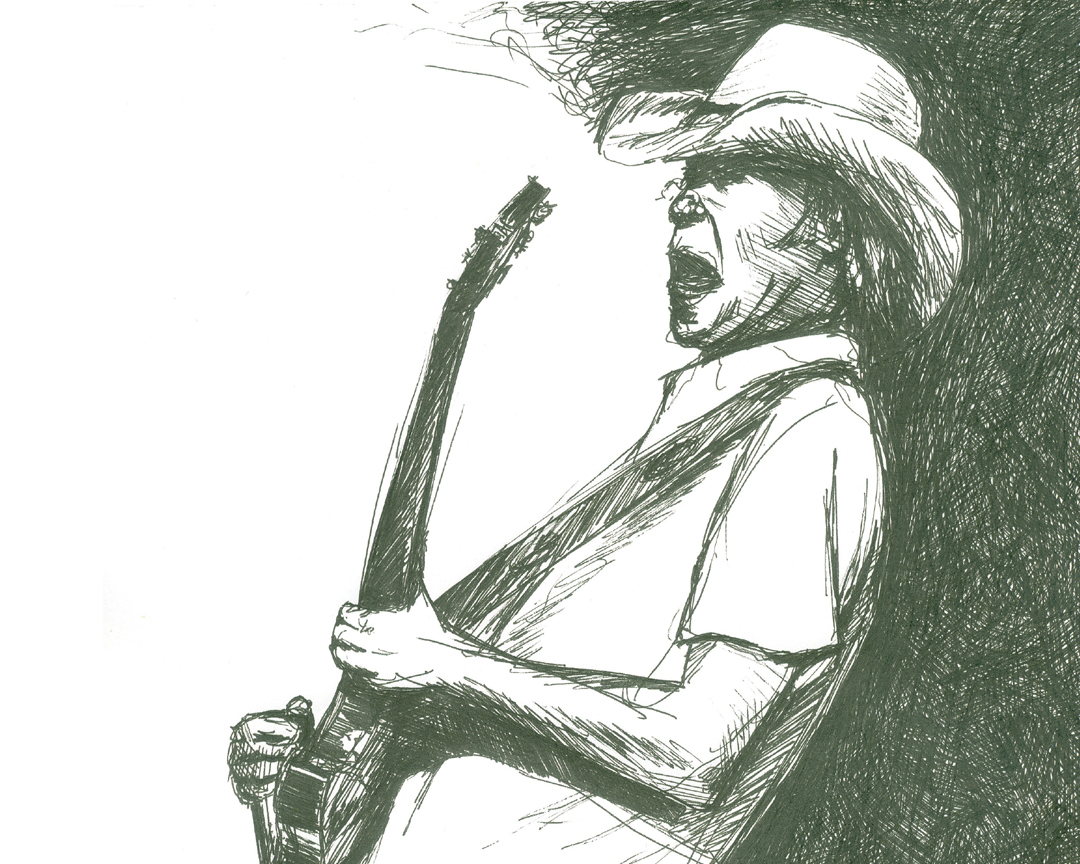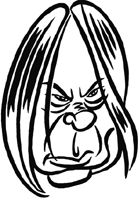So what seperated the 2007, $170. a ticket version of Neil Young in concert, from previous models seen and heard at considerably more reasonable prices in past years?

In a lot of ways, not much truth be told. Although -- unlike past Neil Young shows where you usually get either an exclusively acoustic show, or the more hard rocking, cranked to eleven model (usually with Crazy Horse) -- with this past Tuesday's Seattle stop on the Chrome Dreams Continental tour, you did get the whole package in one shot. And you got quite a bit of it to boot, in a show that ran nearly three hours figuring in breaks and intermissions.
Another big difference with Neil this time around was the way the show ran like clockwork. Despite its length, it started and ended right on time, and the intermission times between sets -- at fifteen and twenty five minutes respectively -- were strictly adherred to, and kept as though handed down by law.

This actually made for some discomfort during the break between the acoustic and electric sets. The twenty five minute break alloted you barely enough time to stand in the single line bathroom, and you could pretty much forget about attempting to grab a frosty beverage (in keeping with the inflated ticket prices, a Bud Light at the WAMU cost $8.25 anyway).
So when the familiar strains of a particularly cranked sounding "The Loner" sounded the alarm to return to your seat, you were then made to wait in the lobby until the song ended. Which only created a mass of people trying to get to their seats by the time of the second electric tune, "Everybody Knows This Is Nowhere." A pretty pointless exercise all told, since this actually made the visibility for those already seated even worse in the flat-as-a board WAMU Theatre (there is no slope in the rows at the venue), as a throng of folks crowded the aisles in search of their seats.
 With that said, the setlist at this show was nothing short of a dream come true for a hardcore Neil Young fan.
With that said, the setlist at this show was nothing short of a dream come true for a hardcore Neil Young fan.Heavy on rarities, and even some never before heard songs, I can honestly say that I never thought I would live to see such rarely played songs as "Ambulance Blues" from On The Beach performed live by Neil Young.
Yet there it was, as the very second performed tune of the evening in the acoustic portion of the show, sandwiched in between the opening "From Hank To Hendrix" and the never released "Sad Movies," (rumored to be intended for the likewise unreleased Homegrown album).
I've been to numerous Neil Young concerts where I have heard songs like "Rockin In The Free World" and "My, My, Hey, Hey" performed dozens of times (neither were here). But there was no denying the feeling that this was something special. Of course, since such typically played songs were not performed, you had the usual "rawk n' roll" types screaming out for them -- a fact that Neil seemed to take with uncharacteristically good humor. At one point, when one such fan yelled for "Like A Hurricane" (which was later played in the encore), Neil responded by asking "where's the seque?"
From Rust Never Sleeps to Greendale, Neil Young has also become known for the goofy ways he likes to decorate his stage, and this show was no exception. There was everything up there from a cigar store Indian, to an oddly lettered backdrop -- which didn't seem to make any sense at all until the end of the evening when it appeared to spell out "Pegi And Neil." During the electric portion of the evening, there was also a huge easel where each song was introduced by a different painting depicting the song title.
Speaking of the electric set, words simply cannot describe the way he tore into a twenty some odd minute, feedback drenched version of the song "No Hidden Path," from the new Chrome Dreams II. This was vintage, cranked up Neil playing in that trance-like state he gets himself into where he sways back and forth so hard you just hope he doesn't fall over and hurt himself.
Here is a very short clip of "No Hidden Path" I found on YouTube from the WAMU show:
Speaking of the electric set, words simply cannot describe the way he tore into a twenty some odd minute, feedback drenched version of the song "No Hidden Path," from the new Chrome Dreams II. This was vintage, cranked up Neil playing in that trance-like state he gets himself into where he sways back and forth so hard you just hope he doesn't fall over and hurt himself.
Here is a very short clip of "No Hidden Path" I found on YouTube from the WAMU show:
I've read some other reviews of this show on the internet -- mostly linked over on Thrashers Wheat -- where it has been suggested that Neil looked old, or that he otherwise was "phoning it in." I don't know what show they were at, but from my 14th row vantage point Neil both looked and sounded great to me.
The only other thing that I really noticed as far as this show being any different from past shows, was that the crowd was nowhere near as mixed as I usually remember, and definitely tended to skew older. The mix seemed to be part professional computer geek types (I'm pretty sure I spotted Paul Allen seated a few rows from us), and what my concert pal for the evening referred to as "old grey ponytail special." It was the sort of mix (or rather, the lack thereof) that I would one hundred percent attribute to the higher ticket price.
The opening set, by Neil's wife Pegi, was pleasant enough, even if wasn't anything particularly special. The good news is that Pegi has a nice voice, a few decent songs, and in general managed to escape the curse of rock star wives trying to share the stage that has plagued music going back at least as far as Yoko Ono (and boy do I smell some trouble coming for what I just said).
Still, there was no escaping the fact that there was indeed a "special" sort of feel about this show.
Still, there was no escaping the fact that there was indeed a "special" sort of feel about this show.
Now if Neil would only consider sharing that "specialness" with some of his, shall we say, "lower rent" class of fans.
Setlist:
Acoustic:
1. From Hank To Hendrix
1. From Hank To Hendrix
2. Ambulance Blues
3. Sad Movies
4. A Man Needs A Maid
5. No One Seems To Know
6. Harvest
7. After The Gold Rush
8. Mellow My Mind
9. Love Art Blues
10. Love Is A Rose
11. Heart Of Gold
Electric:
12. The Loner
12. The Loner
13. Everybody Knows This Is Nowhere
14. Dirty Old Man
15. Spirit Road
16. Bad Fog Of Loneliness
17. Winterlong
18. Oh, Lonesome Me
19. The Believer
20. No Hidden Path
Encores:
21. Cinnamon Girl
21. Cinnamon Girl
22. Like A Hurricane


















